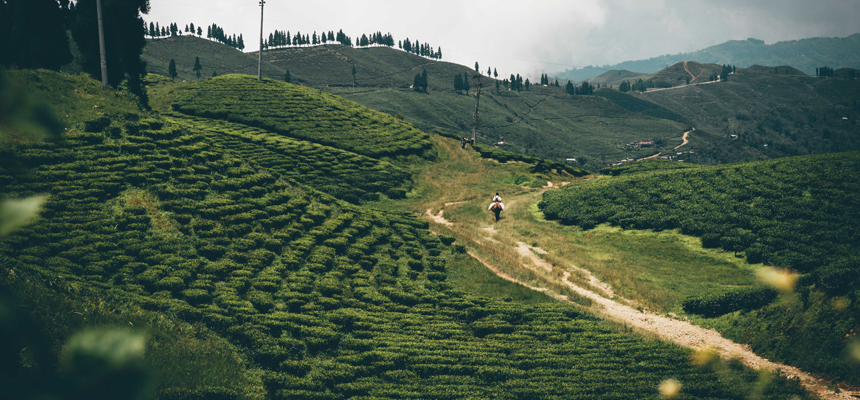A brisk walk in a tea garden, tranquil picnic and sightseeing stops, short treks along gentle slopes, or a trudge into the nearby woods –all this and more is offered for its tea, is a small hill town with pristine landscapes of slopes tea gardens, mountain streams, dense natural forests, holy sites and a unique culture. Using Ilam Bazaar as a base you can take excursions for a day or more.
While the subtropical climate of Ilam ensures good weather throughout the year; the best time to visit Ilam is between October –December or from April –February.
Ilam district is bordered by Panchthar in the north, Jhapa in the south, West Bengal of India in the east, and Morang and Dhankuta district in the west. It lies to the south of the Mahabharat range and west of the Shinghalila range.
Elevations in Ilam district range between 140 m to 3,636 m above sea level. Ilam is sometimes called Charkhol (area of four rivers) because of the four main rivers-the Jogmai, Puwamai, Mai, and Deumai in the district.
It is also one of the richest districts in Nepal in terms of its cultural diversity, natural landscape, and flourishing cash crops sector. Potato, cardamom, ginger, red round chilly, milk, and broom grass are the major cash crops. Visitors also go to Ilam for botanical and anthropological research.
Places to Visit around Ilam
Shree Antu
Shree Antu is home of Antu Danda (2,328m) (ridge) that offers spectacular views of the sunrise and sunset over the eastern Himalayas. Shree Antu overlooks the Terai flatlands, terraced hills of cash crops, tea gardens and thick forests of pine tress. On a clear day you can see the middle hills and plains of neighboring Darjeeling district in West Bengal, India. About a 3 –hour drive from Ilam Bazaar, Shree Antu area also offers home –stay facilities.
Mai Pokhari
Mai Pokhari (2,121m) is a pristine little lake surrounded by dense forest a fir, juniper, birch, pine and a variety of flora and fauna. Mai Pokhari is a religious and historical spot with a 9-cornered lake as the main attraction. The lake is considered the sacred abode of Goddess Bhagawati. Different species of medicinal plants, herds and orchids, mostly for research and experimental purpose, are cultivated in the Mai Pokhari area. Rare animals like the musk deer, leopard, porcupine, jackal as well as numerous migratory birds and rare insects are also found in the area. People from different parts of Nepal visit Mai Pokhari in Ilam for annual festivals on Kartik Ekadasi which falls in October or November. Mai Pokhari is about one and half hour drive from Ilam Bazaar.
Kanyam and Fikkal
On the way to Ilam Bazaar, Kanyam and Fikkal have large tea estates that have made Ilam famous for more than a hundred years. These tea gardens are popular among tourists for Picnicking, sightseeing, and photography. Fikkal is a business center in eastern Ilam and on the Mechi Highway leading to Ilam. It is also the junction from where one can go to the eastern border city Pashupatinagar adjacent to Darjeeling district of India. Indian and Nepali nationals can cross over the other side of the border with valid documents.
Siddhi Thumka
Siddhi Thumki (1,800m) offers good views of sunrise and sunsets from its elevation. You can also see the Terai flatlands the Mahabharat range and the Churia mountain range from this area. Siddhi Thumka is about a 3-hours trek from Ilam Bazaar.
Chhintapu
Chhintapu (3,353m) is the second highest peak in Ilam district. Nearly 11 varieties of rhododendron, rare herbs, endangered species of animals like the musk deer and red panda are found in this area. Mt Kanchenjunga, the third highest peak in the world, and most parts of Ilam can be seen from here.


Comments